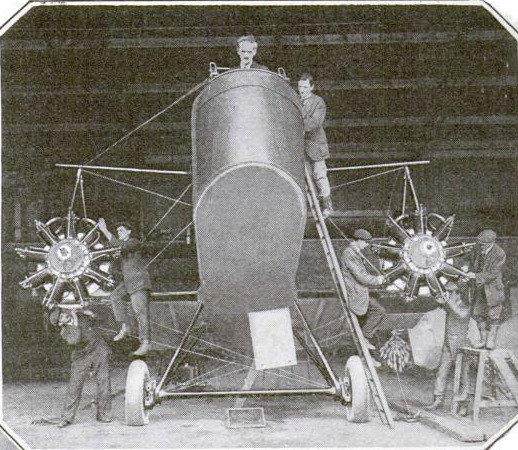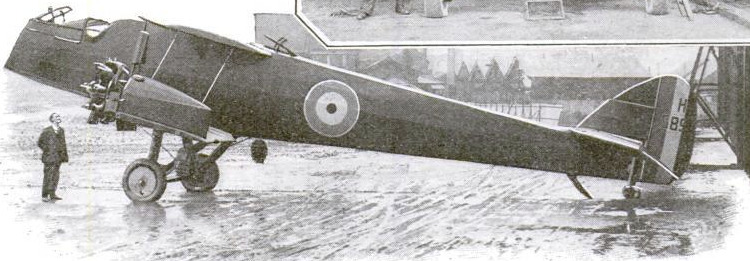The improvements in the airplane technology
Item
-
Title (Dublin Core)
-
The improvements in the airplane technology
-
Article Title and/or Image Caption (Dublin Core)
-
Real Ships of the Air
-
extracted text (Extract Text)
-
THE first airplanes were “all wings.” Pilot, passengers,
engines, tanks, radiators, and what-not were simply
dumped over the lower plane. The writer recalls vividly a
conversation among the members of the Aerial Experiment
Association at Hammondsport in August, 1908, about the
designs for the Silver Dart, the forerunner of the first practical
Curtiss machine. A body to house the engine, etc., was
suggested, but dismissed as useless and weight-wasting.
Today the body—the fuselage—is the most essential part
of the whole design, since the genius of Nieuport has
shown that the time-honored belief that an airplane's wing
surface increases only as the square and its weight as the
cube of the linear dimensions holds true only for the anti-
quated “all-wing” type. Since the fuselage came into its
own, it has become recognized that the fuselage obtains the
same advantages from an increase in size as does the hull of a
ship. The larger it is, the
more space relatively for
housing all sorts of things,
and at the same time the less
the head resistance.
Now we know, at last, *
that the lift of a fast
airplane depends far less
onthe relative size and
weight of the wing surface
than on the total head
resistance, and that its
head resistance, just as in a
ship, becomes relatively
smaller as the craft grows
larger.
-
Language (Dublin Core)
-
eng
-
Date Issued (Dublin Core)
-
1919-06
-
pages (Bibliographic Ontology)
-
78
-
Rights (Dublin Core)
-
Public domain (Google digitized)
-
Archived by (Dublin Core)
-
Davide Donà
-
Marco Bortolami (editor)
 Popular Science Monthly, v. 94, n. 6, 1919
Popular Science Monthly, v. 94, n. 6, 1919




